Historical Architecture of Grosse Pointe – Grosse Pointe Farms and the Roaring 20’s – Part 1: the architects.
The roaring 20’s..boom time for many cities in America and a Golden Era of Architectural significance in Grosse Pointe Farms. During the first two decades of the 20th century and during the period after WW1 Grosse Pointe Farms had transformed itself from a rural, recreational community to an exclusive suburb in Southeast Michigan. The area, up until that point, had been a haven for summer recreational cottages for wealthy Michigan families, who wanted to spend their summers on the lake. However, during the 20’s things began to change and the once hotspot for vacations was being transformed into a year round neighborhood for affluent Detroiters.
At the beginning of the twentieth century the vernacular houses that were visible around Grosse Pointe Farms were typical of the homes found in Southeast Michigan and their architectural style was readily identifiable. However, as American prospered, the 1920’s in Grosse Pointe Farms ushered in a new style of architecture. Homes started to become a lot more varied in their style thanks to the prominent architects who were coming to the area to work on non-residential buildings and houses in the community.
The most popular architectural style was Colonial Revival and it was architect Robert O.Derrick who used this style most frequently in his Grosse Pointe designs.
Robert O. Derrick was a prominent architect known for his design of period style buildings. He designed more buildings in Grosse Pointe Farms than any other architect, and twenty of his buildings still exist. The majority of his buildings were designed in Colonial Revival style, while a few where in a Tudor Revival style.
H.H. Micou designed eleven buildings in Grosse Pointe Farms in four years. His 4 homes on Vendome and three on Touraine sill exist today and like Derrick, his style was predominantly Colonial and Tudor Revival along with French Eclectic.
The work of Hugh T. Keys also featured heavily in the Farms in the late 1920’s. His pièce de résistance was undoubtedly his Italian Renaissance inspired home at 221 Lewiston. Keys also had a passion for Colonial and Tudor Revival designs – 78 Lakeshore Drive being a prime example.
Detroit based architect J. Ivan Dise created three houses on Kenwood, one on Cloverly and a further house on Country Club Lane between 1926- 1929.
Other prominent architects, who were not necessarily known for their work on residential properties also began to create some wonderful homes in the Farms. C.Howard Crane – who specialized in the design of movie places in North America – designed homes at 63, 69 and 79 Cloverly. While innovative industrial designer Albert Kahn designed homes at 8 Carmel Lane, 28 McKinley Place and 257 Ridge Road to name but a few.
Not to be forgotten nationally known architects, who already had significant works on Lakeshore, also had residential projects in the Farms – John Russell Pope (designer of the Roy D. Chapin Residence at 447 Lake Shore Road) designed a Colonial Revival home at 300 Provencal in 1928. While Charles A. Platt (famed for his work on Alger House at the GP War Memorial in 1910) created 99 Lothrop in 1928.
The influence these architects had on the architectural style of homes and buildings in Grosse Pointe Farms was astonishing. Their focus on Colonial Revival and Tudor Revival designs lead a transformation in the style of homes that were built throughout the community, which not only lead to a consistent look and feel but continued in smaller, simpler homes by architects who were less known.
Some of the best examples of Colonial Revival buildings that can still be found around Grosse Pointe Farms are –
Non-residential buildings:
- 6 Berkshire Place (1929 R.O Derrick) – Grosse Pointe Club
- 17-21 Kercheval Avenue (1929 R.O Derrick) – Punch and Judy Theater
Residential Homes:
- 180 Ridge Road (1926 R.O Derrick)
- 248 Provencal (1925 R.O Derrick)
- 411 Country Club Lane (1932 William B. Stratton)
- 194 Provencal (1934 Raymond D. Carey)
- 226 Provencal (1941 Frank Miles)
- 309 Lake Shore Drive (1949 John L. Pottle)
Additional examples are located at:
- 23, 27 Beverly Road (1923 R.O Derrick)
- 210 Cloverly
- 181 Earl Court
- 56 (1928 H.H. Micou), 70 (1927 R.O Derrick), 75 (1926 R.O Derrick), 120 (1926 R.O Derrick), 135 (1926 R.O Derrick) Kenwood Road

We will be will continuing with the exploration of the architectural styles in Grosse Pointe Farms next week, with an in-depth look at the Colonial Revival style along with other popular architectural styles that featured so heavily in the roaring 20’s.
Written by Katie Doelle
Copyright © 2015 Katie Doelle

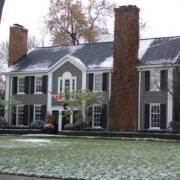
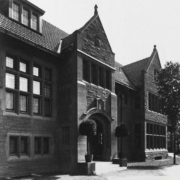
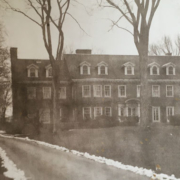
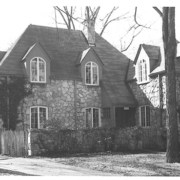

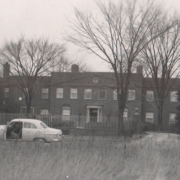

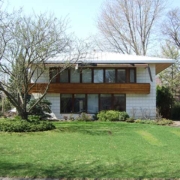
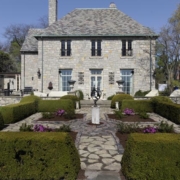
Leave a Reply
Want to join the discussion?Feel free to contribute!